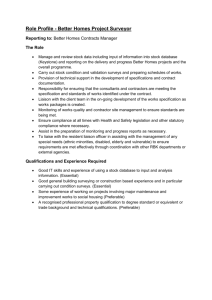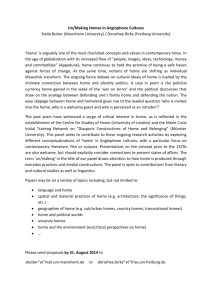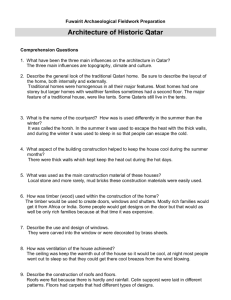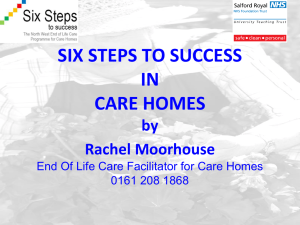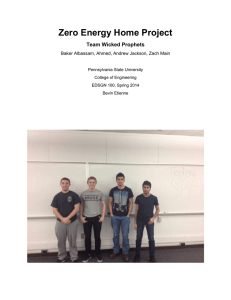Lesson 8 How Do Communities Change From Rural to Urban
advertisement
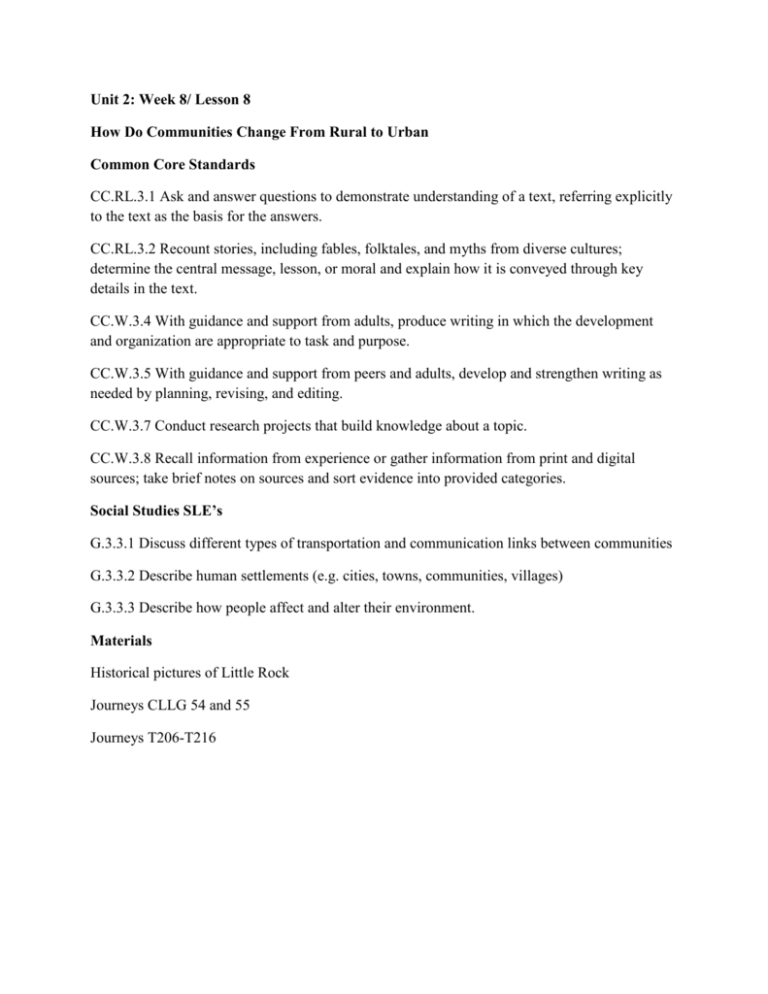
Unit 2: Week 8/ Lesson 8 How Do Communities Change From Rural to Urban Common Core Standards CC.RL.3.1 Ask and answer questions to demonstrate understanding of a text, referring explicitly to the text as the basis for the answers. CC.RL.3.2 Recount stories, including fables, folktales, and myths from diverse cultures; determine the central message, lesson, or moral and explain how it is conveyed through key details in the text. CC.W.3.4 With guidance and support from adults, produce writing in which the development and organization are appropriate to task and purpose. CC.W.3.5 With guidance and support from peers and adults, develop and strengthen writing as needed by planning, revising, and editing. CC.W.3.7 Conduct research projects that build knowledge about a topic. CC.W.3.8 Recall information from experience or gather information from print and digital sources; take brief notes on sources and sort evidence into provided categories. Social Studies SLE’s G.3.3.1 Discuss different types of transportation and communication links between communities G.3.3.2 Describe human settlements (e.g. cities, towns, communities, villages) G.3.3.3 Describe how people affect and alter their environment. Materials Historical pictures of Little Rock Journeys CLLG 54 and 55 Journeys T206-T216 Direct Explanation/Model What: We are going to examine how communities change from rural to urban. Why: To learn to use clues to help us draw conclusions. How: We will examine photographs, use technology, and build our own community to show students how the things they do impacts others. Guided Practice This lesson, which teaches students how communities change, involves creating a town that will undergo many changes—some positive and some negative. The activity provides a way for a single class or several classes to see in a concrete way how the things they do impact others. Although the introduction to this lesson will only take 1 session, the project can be done over the course of a couple of weeks. Day 1 Show students the historical pictures of Little Rock. Then, show them Little Rock from Google Earth. Ask them what they notice about the way Little Rock looked in the past compared to how it looks today. Ask them to draw some conclusions about why Little Rock has changed. Use clues from the pictures to help draw conclusions. Set up a sizeable area that won’t be disturbed for 2-3 weeks. You might set up a special table covered with green construction paper. Discuss with students what will need to be added to the table to create a setting for a town. Students might suggest roads, bodies of water, and other features. You can use black paper to add roads, blue construction paper to add bodies of water, and so on. After the physical features are completed, it is time to “build” homes in the community. Ask students to consider the following questions: What kinds of homes will students build? Will different types of homes be located in different parts of the community? The remainder of this project will be done over a period of a couple of weeks. Students might use shoeboxes, milk cartons, and art supplies to create different styles of homes. This might be a homework assignment. When the homes are completed, have students place them throughout the community. Why do students place the homes in specific locations around their community? Ask the students to reflect on how the community changes as it grows—as more homes are built? Discuss the impact on the community of new construction. How has the original set up of the town changed? Have students had to build new roads? Do residents have less land surrounding their homes? List the changes. If you have a digital camera available, take pictures as the town goes through various transformations to document changes. As more homes are built, discuss the impact on the people who live in those homes. Soon the community will grow so much it will need a variety of services; they might include grocery or drug stores, a hair stylist, a church, a dry cleaner, a bakery, a restaurant. Where will those businesses/services be located? How will adding those businesses impact the community? Have students create some businesses. Discuss where those businesses will go. Will trees need to be ripped up? Is the park going to have to go? Does another street need to be built? community. How might the community continue to change in the years ahead. Finally, bring the discussion back to the students’ own community. Which one of the changes to the model community is reflected in their own community? Day 2 Tell students that great thinkers use clues to help them draw conclusions. Introduce the story Harvest Birds. Have students look at the pictures and draw some conclusions about what the story is about and where the story takes place. In what kind of community does the character live? Read the story, stopping periodically for brief discussion of the text. Use suggested stopping points in CLLG 54 to help guide discussion. Assessment: In the Reading Response Log have students answer the following question: Why was Juan successful? How do you think his life might change as a result of this experience? Day 3 Revisit the story Harvest Birds. Use the mini-lesson from CLLG p 54 to explore the minilesson principle “Drawing Conclusions”. Assessment: In the Reading Response Log, have students answer the following question: Given what you know about Juan, do you think he would like working and living in our community? Give clues to support your answer. Assessment Have students write about paragraph telling how their own community has changed in the past and how it might need to change in the future.



